I recently did some testing to compare the performance and features of an N100 mini PC as a replacement for a Raspberry Pi 5. In response to that test, quite a few people asked how an N97 PC compares to a Pi 5 or N100 PC. So Today I’ve got a NucBox G5, which is a tiny N97-based mini PC from GMKtec to try out and add to the comparison.
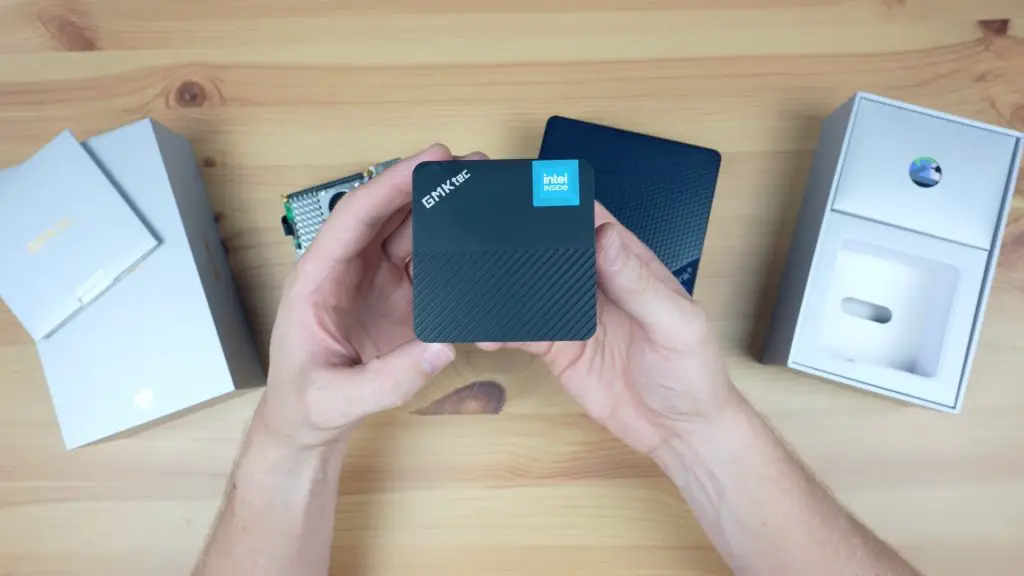
Here’s my video of the test and results, read on for the write-up;
Purchase Links For The Computers and Parts Used For Testing
- GMKtec NucBox G5 – Buy Here
- Beelink Mini S12 Pro N100 Mini PC – Buy Here
- Raspberry Pi 5 – Buy Here
- Pi 5 Active Cooler – Buy Here
- Pi 5 Power Supply – Buy Here
- Pimoroni NVMe Base – Buy Here
- Lexar NVMe SSD – Buy Here
Equipment Used
Hardware and Features of Each Computer
Like the N100 PC, the N97-based PC is a mini PC built around Intel’s Alder Lake N family of processors, and in this case the N97 CPU. Despite the naming conversion which may suggest that the N100 CPU is the more powerful of the two, the N97 is actually the more powerful and more expensive CPU.
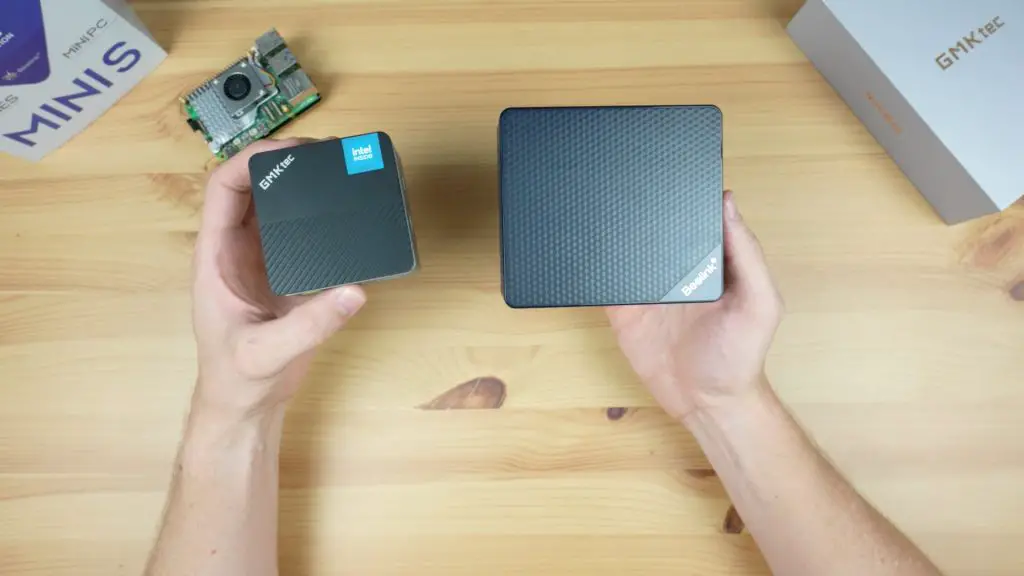
The N97 CPU package is a little over double the price and has double the thermal design power or TDP. It has the same number of cores as the N100 CPU but they can run up to 3.6GHz instead of the 3.4GHz that the N100’s cores can do.
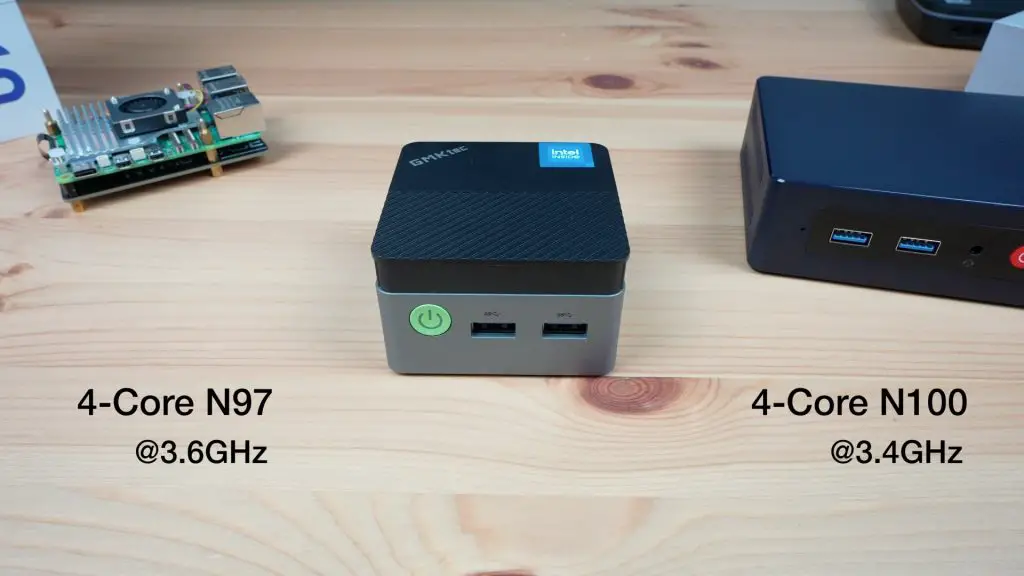
Despite the N97 CPU package being listed as more expensive than the N100 CPU, there are quite a few N97-based mini PCs available for a very similar price.
The Beelink Mini S12 Pro N100 PC that I used previously cost me $159 and there are a number of N97 options available in the $150-$160 range. The NucBox G5 cost me $158 and is currently listed for $150 on their website.
So the three options are very similarly priced once we’ve added some basic accessories to the Pi 5 to match the PC’s inclusions;
- 8GB Raspberry Pi 5 – $80
- Official Active Cooler – $5
- Official Power Supply – $12
- Pimoroni NVMe Base – $15
- NVMe SSD – $48
The fully kitted-out Pi 5 (without a case) comes to a total of $160.
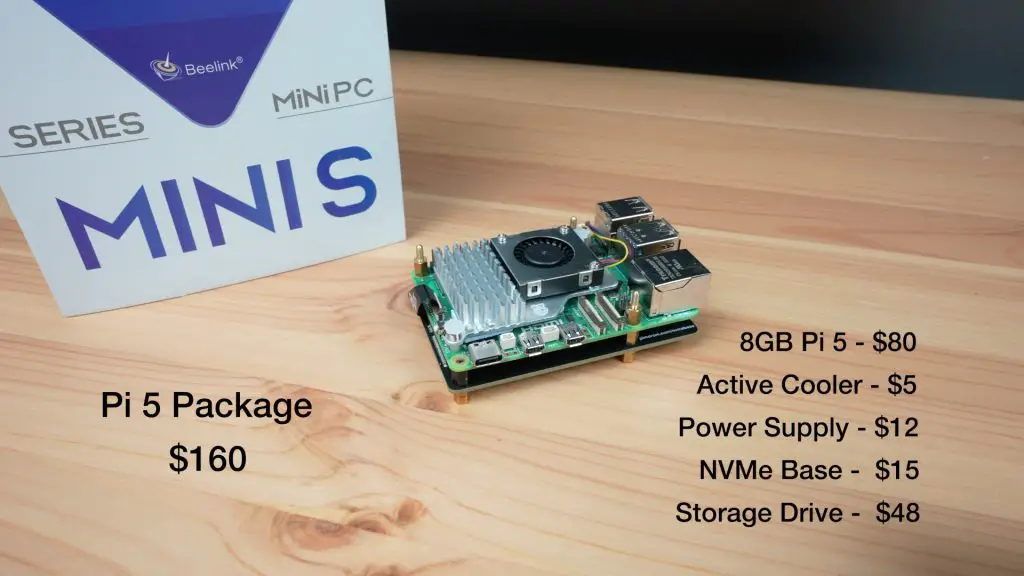
In terms of specifications, the N97 PC has 4 CPU cores which run 200MHz faster than the N100 and has integrated UHD graphics which runs 450MHz faster.
The N97 PC has 12GB of DDR5 RAM running at 4800MT/s and a 500GB SSD, so its memory is right in the middle of the Pi 5 and N100 PC and its storage capacity is the same. Besides the SSD and WiFi adaptor, nothing else is upgradeable in the N97 mini pc.
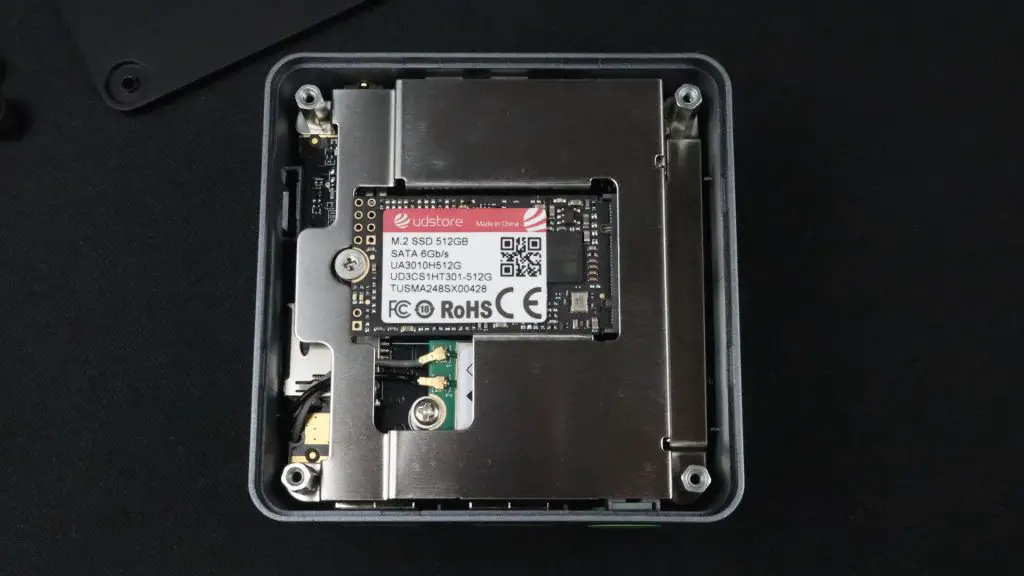
The N97 PC has similar connectivity options to the Pi 5 and N100 PC. It has Gigabit Ethernet, two HDMI ports, three USB 3.2 ports, a MicroSD card slot and an audio jack.
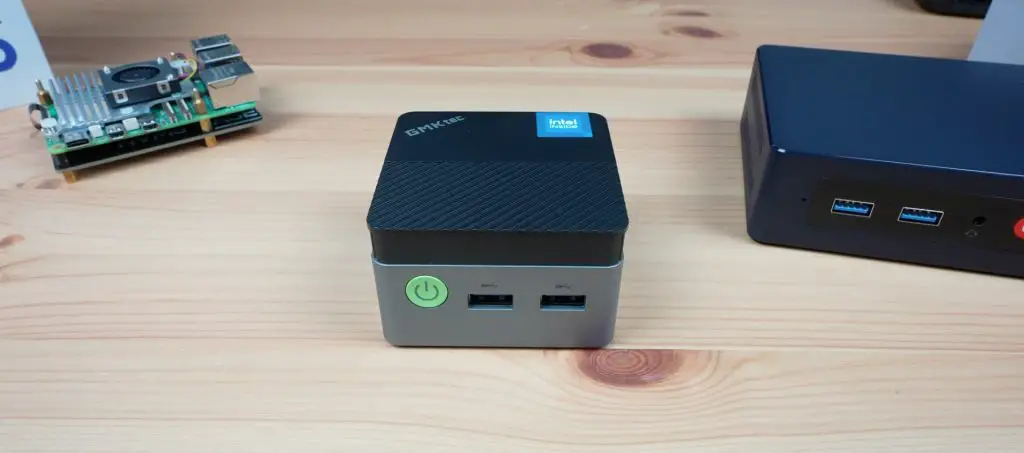
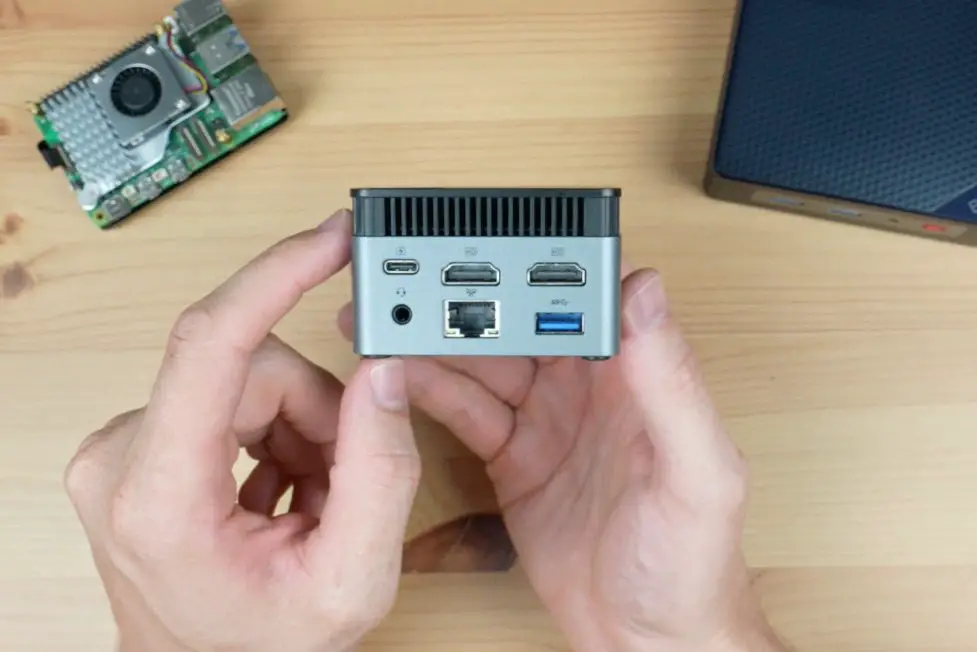
Storage is likely going to be quite a bit slower on the N97 PC as it has an M.2 SATA drive, not an NVMe drive. I’m not really sure why they have done this on this PC as the N97 CPU has the same number of PCIe lanes as the N100, but we’ll see what effect this has on performance during testing.
The N97 PC is also an Intel X86-based system and for testing, we’re going to use the same version of Ubuntu that I used to test the N100 PC and Pi 5, Ubuntu Desktop 24.04.
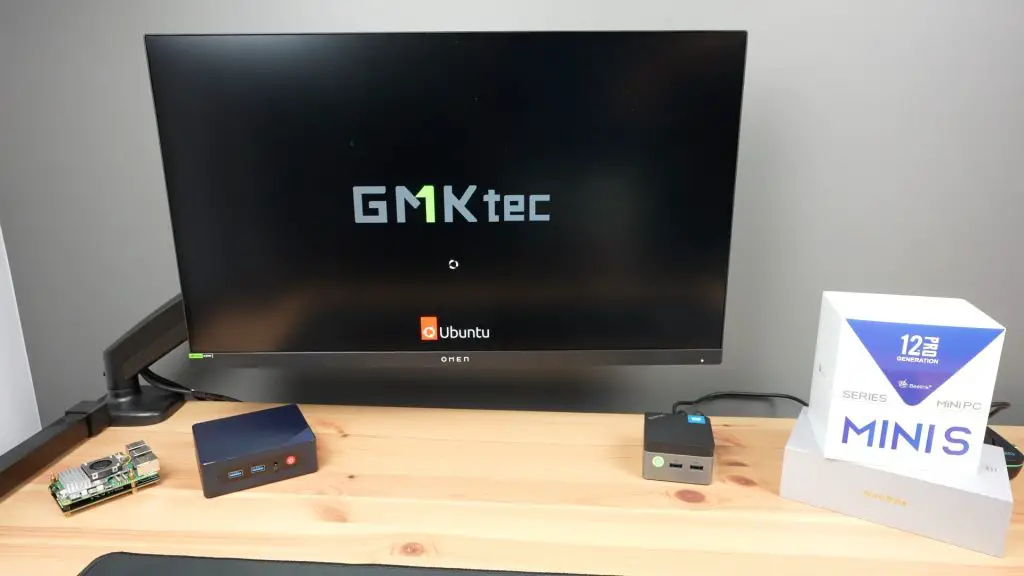
Testing The N97, N100 and Pi 5 Computers
To add to the N100 and Raspberry Pi 5 results, to test performance we’re going to do the following tests;
- Video Playback at 1080P in a Browser
- A Sysbench CPU Benchmark
- An NVMe Storage Speed Benchmark
- GLMark2 GPU Benchmark
- Power Consumption Test
Video Playback at 1080P
To test video playback, we’re going to be playing back a YouTube video in the browser – both in a window and fullscreen. Let’s start with video playback at 1080P.
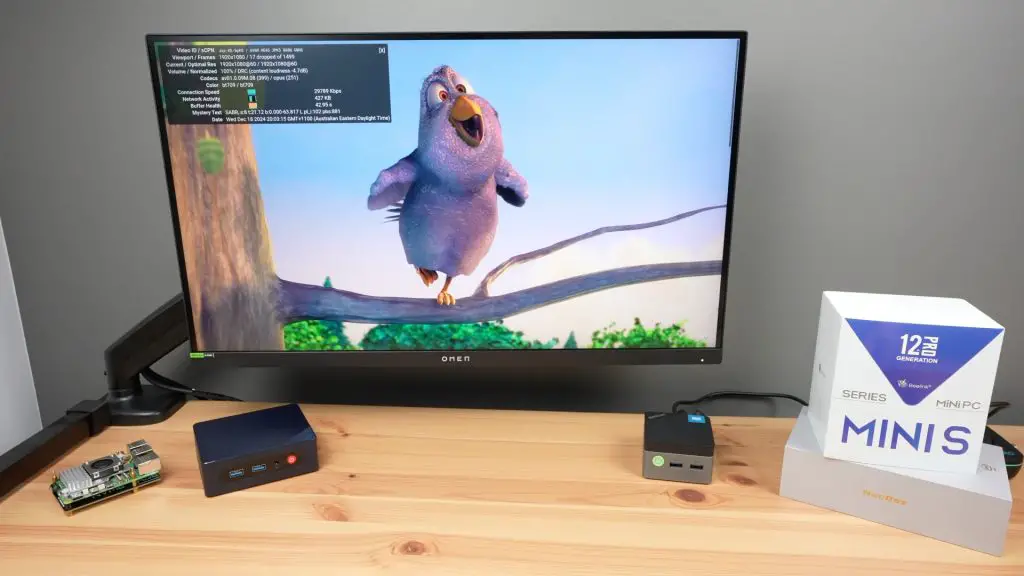
The N97 PC has no problem playing back 1080P video, playback was smooth right from the start with very few dropped frames and playback remained unaffected running in the window or fullscreen.
So, like the N100 PC, the N97 PC is great for 1080P video playback.
Also like the N100 PC, but even a little better, it handles 4K playback really well as well. We get a couple of dropped frames in the beginning but nothing ongoing.
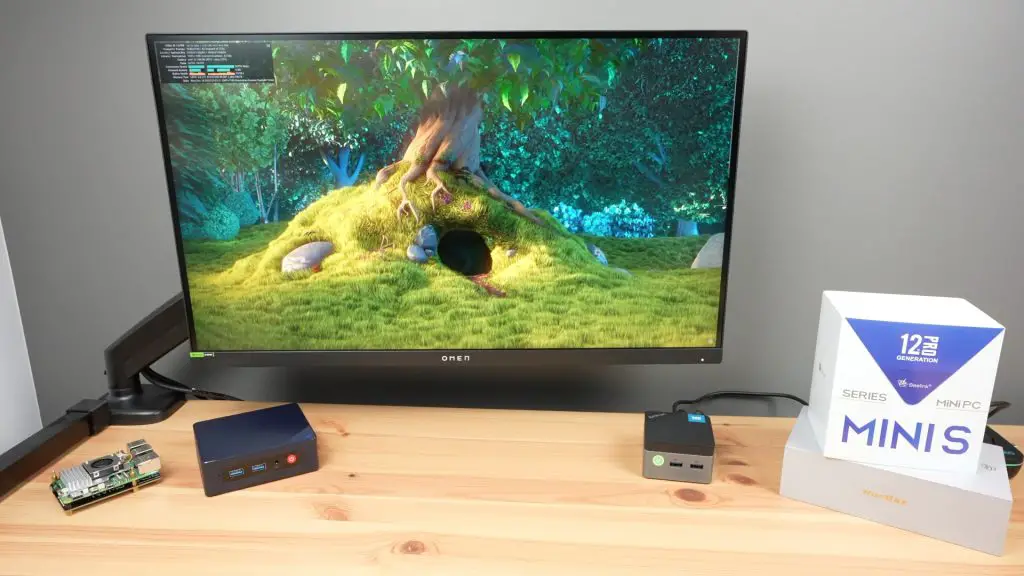
The integrated GPUs in the N97 and N100 PCs far outpaced the Rapsberry Pi 5’s, which struggled a little with even 1080P playback.
Sysbench CPU Benchmark
Next let’s run a Sysbench CPU benchmark. I ran three consecutive tests and then averaged the scores.
I ran the following test three times;
sysbench cpu --threads=4 --cpu-max-prime=20000 --validate run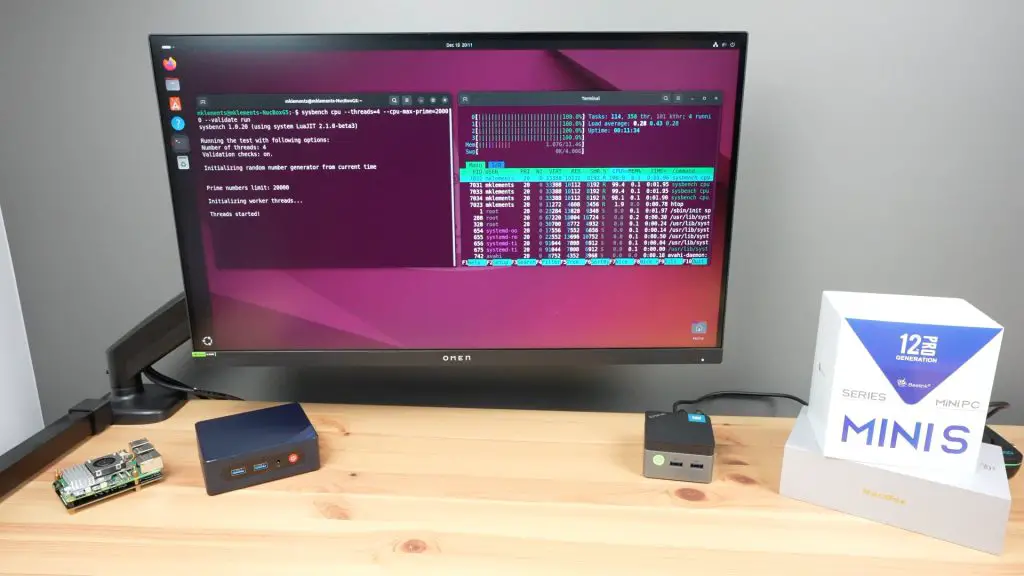
The N97 Pc managed an average score of 44,045.
The scores for each of the three tests were 44,021, 44,072 & 44,042.
So the N97 PC scored essentially the same as the N100 PC which scored an average of 44,058. This is a little surprising given the higher available clock speed on the N97 CPU. Both are about 9% faster than the Pi 5 which scored an average of 40,359.
GMKtec may have limited the maximum performance of the CPU a little because of the compact design and very small cooling system.
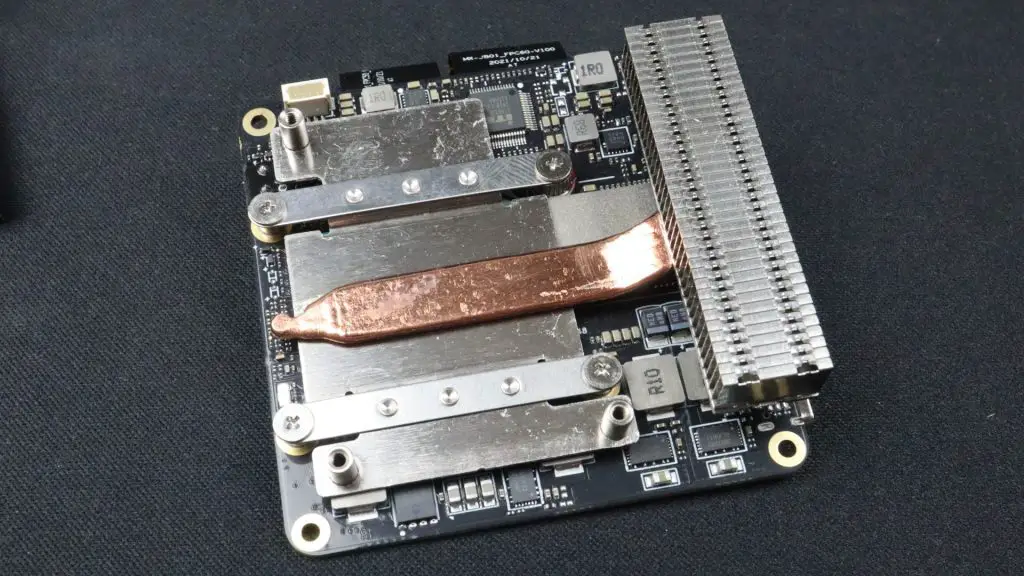
Storage Drive Speed Benchmark
To test the storage speed, I used James Chamber’s Pi Benchmarks script. This script favours random read/write performance, so is a good representation of how an operating system would be making use of the drive.
To run the test, enter the following command in the terminal;
sudo curl https://raw.githubusercontent.com/TheRemote/PiBenchmarks/master/Storage.sh | sudo bash
Over three tests, the N97 PC managed an average score of 30,819 with average sequential read speeds of 487MB/s and average sequential write speeds of 357MB/s.
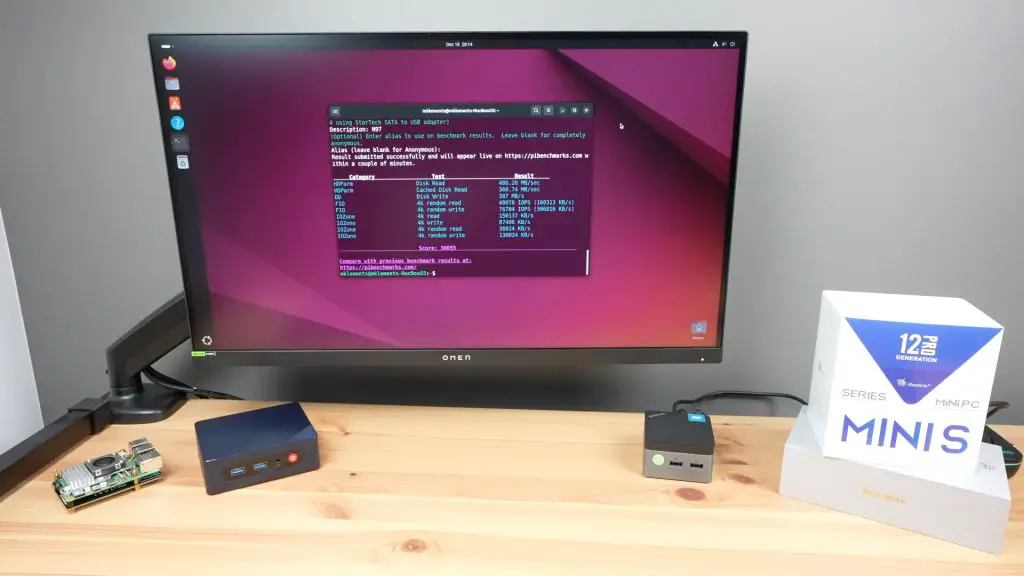
So as expected, the N97 PC’s storage speed is substantially slower than the N100 PC, which scored an average of 44,803 – almost 50% faster. The N97 PC is even slower than the Pi 5, which scored an average of 32,089. The Pi 5 also only uses a single PCIe lane but uses an NVMe drive instead of a SATA drive.
GLMark2 GPU Benchmark
The N97 has the most powerful GPU by a good margin, so I expect it to do quite a lot better than the N100’s results in our GLMark2 GPU benchmark.
This benchmark needs to be downloaded and built from source code, and is then run by entering the below command in the terminal;
glmark2The N97 PC managed a score of 2,863, beating the N100 PC’s score of 2,070 by over 38% and it is over 9 times faster than the Pi 5’s score of 307.
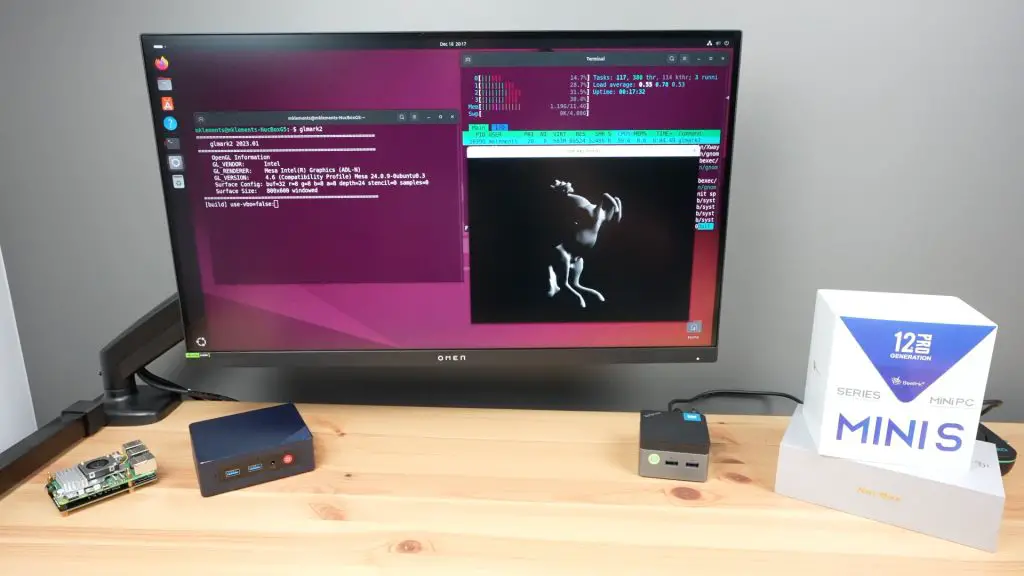
So there is a massive difference in GPU performance between the N97 PC and a Pi 5, and even quite a substantial difference between the N97 and N100 PC.
Power Consumption Test
Lastly, let’s look at power consumption, like with the N100 PC, I expect that the N97 PC to do quite poorly in comparison to the Pi 5.
At idle the N97 PC uses around 6W and this goes up to 24W under load.
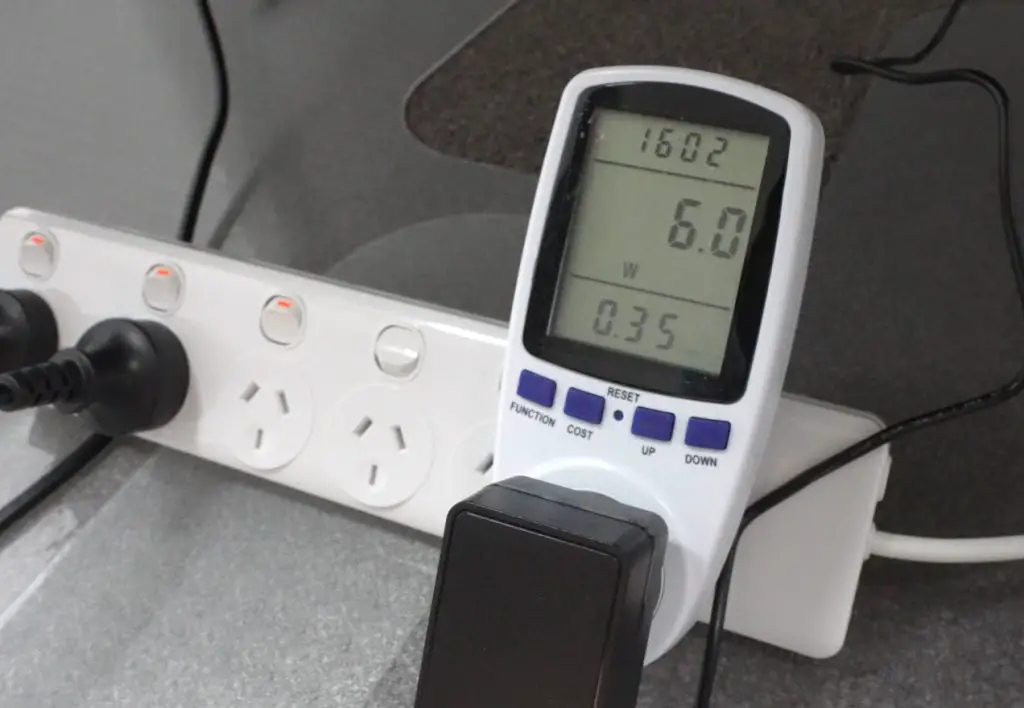
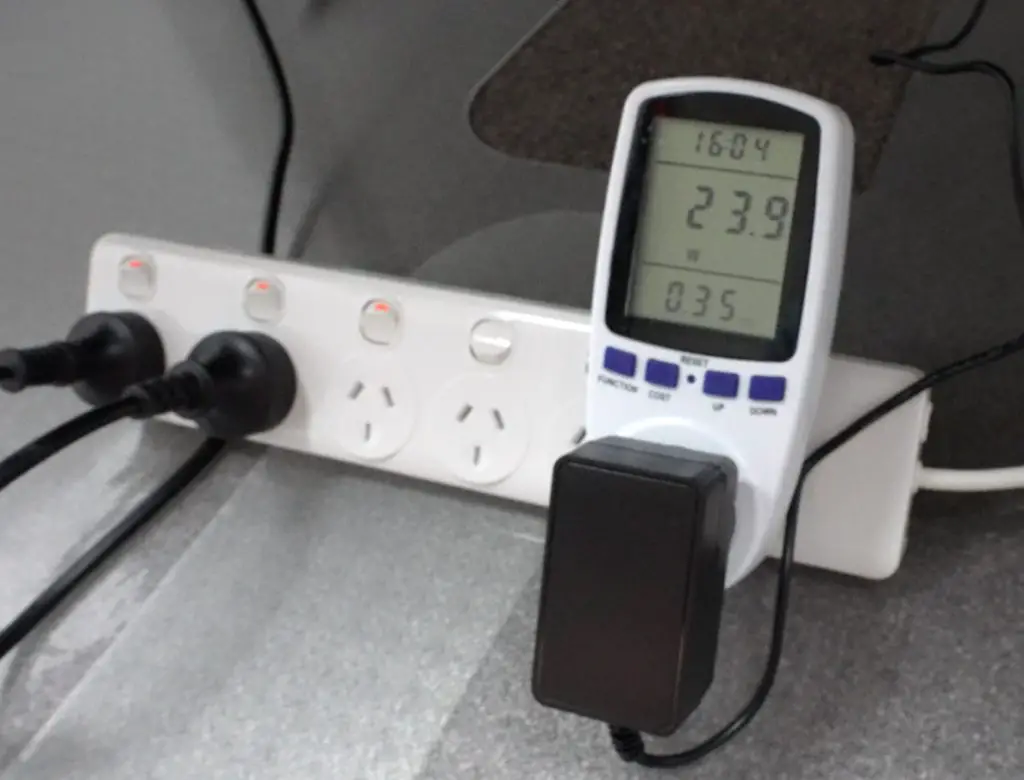
So power under load and at idle is a little lower than the N100 PC but expectedly higher than the Pi;
- N100 PC – 8W Idle and 27W Under Load
- Pi 5 – 4W Idle and 9W Under Load
Like with the CPU test results, this further suggests that they’ve done some performance limiting on the CPU to keep power and thermals down as the N97 CPU should use a lot more power than the N100 CPU.
Power consumption is quite good for a PC but it’s still over 2.5 times the consumption of the Pi under load.
As I said in my original comparison video, this probably makes little difference on mains, but for battery-powered projects that are required to run for many hours or even a few days, this difference can lead to substantial savings in power supply hardware and batteries. There is a significant benefit in using a processor that has been designed for mobile or low-power applications.
Results Discussion and Thoughts on the Three Computers
So the N97 PC beats the N100 PC in all of our tests except for storage speed and the Pi is still the best at power consumption.
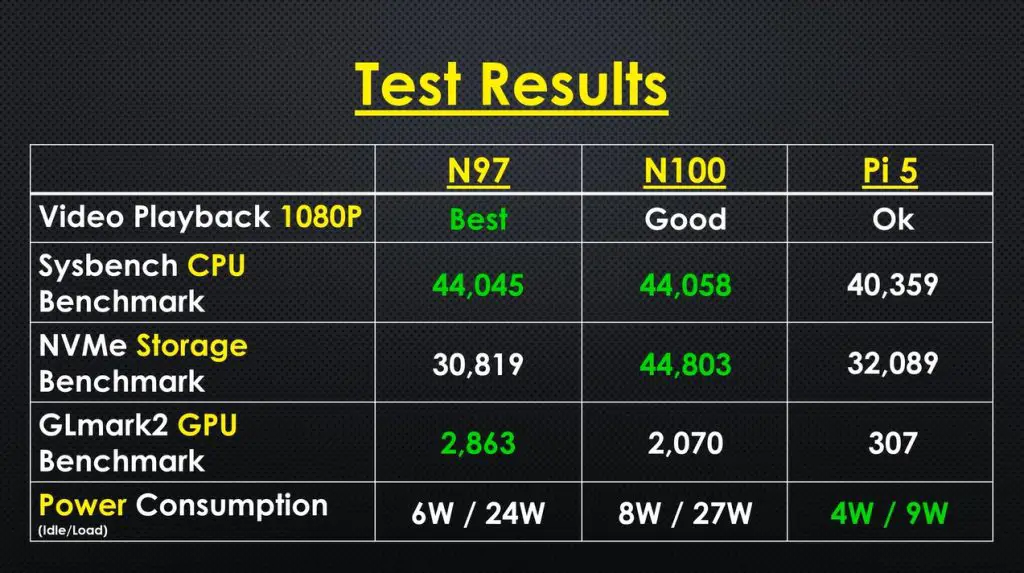
There are other things that the Pi 5 does much better than either of these PC options. The GPIO pins on the Pi are significantly easier to use than any USB or microcontroller-based option that you can add to a PC like an Arduino Pro Mini or Nano, or even one of these purpose-built Adafruit FT232H USB to GPIO breakout boards. There are also loads of tutorials and software packages for the Pi 5 to help you use them.
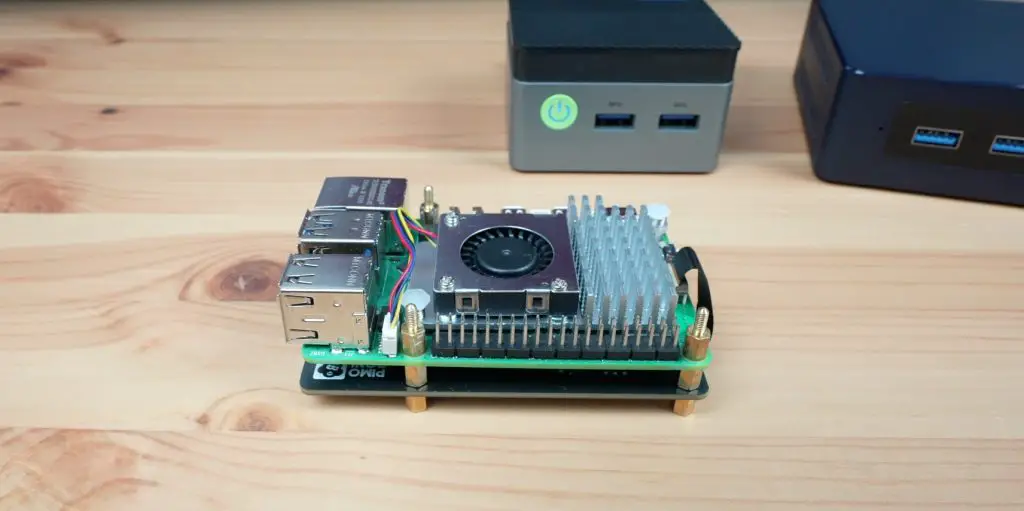
So if you plan on using the computer for electronics or robotics projects with a reliance on the GPIO pins then the Pi 5 is still the best option of the three, but for experimenting with home server projects, running anything reliant on a GPU, or getting started with Docker or Kubernetes then an N97 or N100 mini PC is a great alternative.
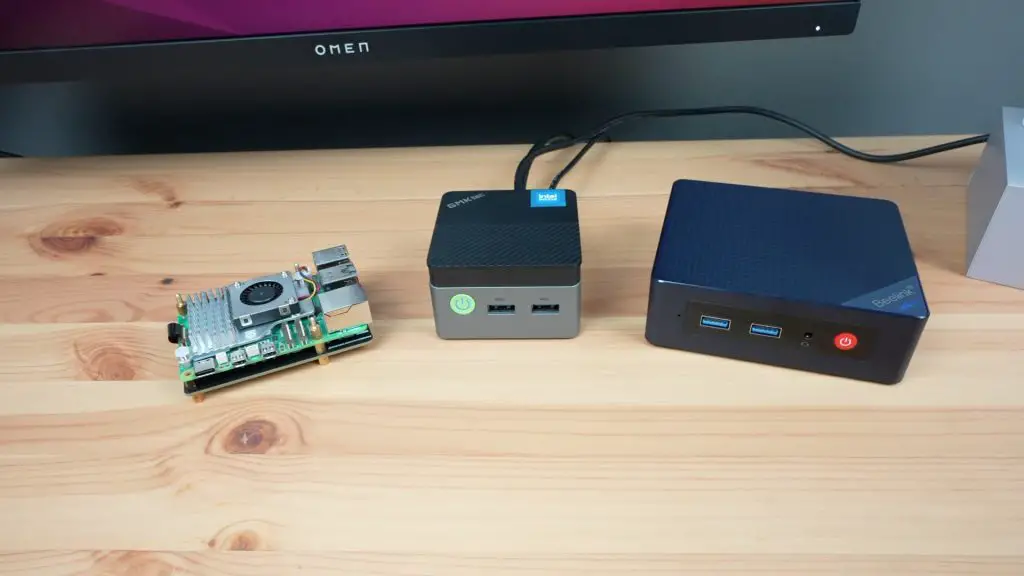
If you can find them for a similar price then I’d probably go with an N97 PC over the N100 for any application where the faster storage drive speed isn’t a significant advantage.
I’m still of the opinion that Raspberry Pi have missed the mark a little with the pricing of the Pi 5. If they do launch a 1GB version of the Pi 5 for around $40 then this would be a great starter board for tinkering with electronics projects, but until they do, you’re probably better off going for a base version of the Pi 4. This still has plenty of CPU power to run projects locally and you’ll have access to a similar set of IO to the Pi 5 but without the additional cost.
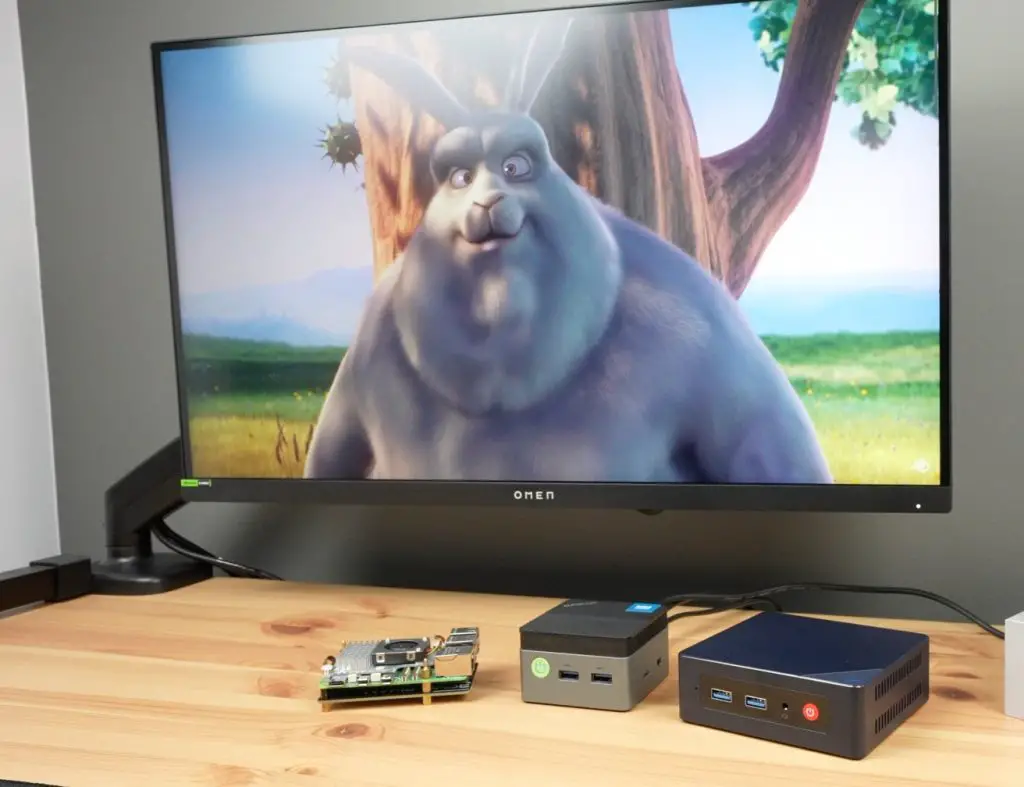
Let me know which of these three computers you prefer and what your use case is in the comments section below.


Fascinating stuff. It seems to me that one of the objectives for the original Pi was as a teach-yourself-programming machine more in the spirit of the Spectrum or BBC Micro of the 80s. The idea that it should be something capable of running a full graphical desktop is more recent. I’m not sure how much that capability is relevant to the industrial applications that consume a lot of Pis but maybe that’s why you can still get a Pi-3. A Pi-3 would still run my main use case – a media server – and I only use a Pi-4 to take advantage of a ready-made case. I hope they continue to focus on supplying a low-cost option for makers/tinkerers that is capable of working with nothing more than a reasonable heat-sink.
I have a GMKTec G5 upgraded to a 1TB SSD with Linux Mint as the OS. I use it as a DVR running Channels DVR which also subs as a video server for my video library. I also use it as a SAMBA file server and as a DLNA server using minidlna. It has been up 24/7 for about 6 months now. The only time it is down is for occasional software upgrades. It has replaced multiple single application pi computers.
Great comparison, it shows a piece of information I always wanted to know about.
If you have the opportunity, I suggest a follow-up with one of the N150 mini PCs that are starting to become popular.
That being said, and only as a comment, I believe the reason for the similar power consumption figures on both the N95 and N100 machines might stem from the fact that manufacturers often run these machines at a 24W or even 30W TDP setting (which the BIOS usually allows for, they’re basically extending the max sustained TDP time to infinity), which will then make the performance jump quite a bit since they’re no longer TDP-bound. Which in turn will allow GPU performance and heat dissipation to be the real differentiators between machines.